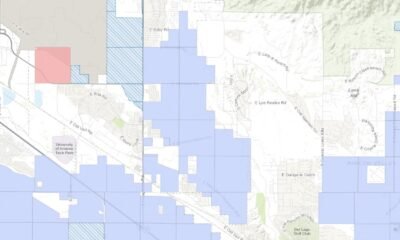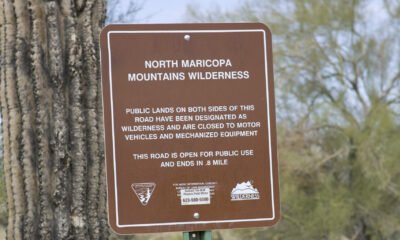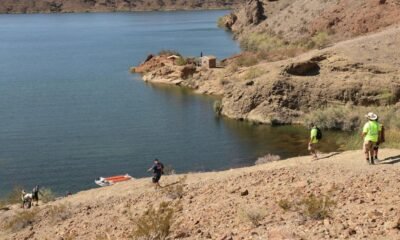Business
Uranium Shipments Spark Outrage: Navajo Land Residents Feel Betrayed

On February 12, 2024, the Navajo Nation commenced the transport of uranium ore across its land, following a recently signed agreement with Energy Fuels, Inc. This initial delivery involved two semitrucks carrying 25 tons of uranium ore from the Pinyon Plain Mine, marking the start of daily truck hauls.
Stephen Etsitty, executive director of the Navajo Nation Environmental Protection Agency, confirmed the implementation of this agreement during a Naabik’íyáti’ Committee meeting. He revealed that transporting operations began after Energy Fuels provided the required 14-day notice on January 29. Initially, two trucks will operate daily, with plans to increase this number to four by the month’s end.
Etsitty specified that the transportation schedule for March would be communicated to Navajo officials later in February. Inspections to ensure safety and compliance were also underway at the haul’s starting point in Cameron.
The first two trucks, covered with silver tarps, were guided to a designated inspection area on Highway 89. Navajo Nation Police and EPA officials conducted thorough safety checks, verifying all regulatory requirements as established by the U.S. Department of Transportation and Arizona state authorities.
During the inspection, Etsitty and Navajo Environmental Law Officer Arnold Maryboy utilized a checklist to assess the trucks’ compliance with safety regulations. Following a series of technical verifications, drivers were asked about their emergency plans and response kits, crucial in the event of an accident. It was emphasized that these plans must also involve local emergency services.
Weight checks were conducted to ensure the trucks adhered to the 25-ton limit, along with inspections of the radioactive signage on the trailers. Monitoring for radiation levels was completed using a Ludlum Model 19 Radiation Monitor, with recorded levels significantly below the maximum allowable limit.
Despite some procedural satisfaction regarding the inspections, Etsitty expressed concern over the community’s sentiments about the uranium transport. The agreement itself had drawn significant attention, especially after Energy Fuels had previously transported uranium without notification, leading to community outrage.
The current arrangement allows transport along state and federally designated roadways, which the Navajo Nation cannot block due to jurisdictional limitations. While federal law prohibits banning the movement of hazardous materials, Etsitty highlighted the tribe’s strategic choice to negotiate instead of pursuing legal action, which might have been futile.
Grassroots activist Treina Jones, voicing discontent with the resumed uranium transport, positioned herself at key intersections with protest banners. She stressed the community’s need for awareness and collaboration against potential health hazards posed by the hauling of uranium ore.
Jones co-founded Bidí Roots, an organization aimed at educating the Navajo community about the implications of the agreement. Plans for an awareness walk are set for February 22 in Tuba City, emphasizing local engagement on the uranium issue.
Fellow activist Leona Morgan criticized the agreement, suggesting it compromises the health and safety of not only the Navajo Nation but neighboring tribes, including the Havasupai and Ute Mountain Ute. Morgan expressed disappointment with the tribal government’s decisions and the lack of public consultation during the negotiation phase.
In a recent webinar, Ute Mountain Ute representative Yolanda Badback condemned the agreement, particularly its provisions related to uranium waste disposal, raising alarms about potential contamination to nearby communities.
As concerns escalate, Etsitty has pledged to improve transparency regarding the operations and agreement details within the Navajo Nation. Engagement with community leaders continues, but skepticism remains among numerous tribal representatives, questioning the adequacy of the negotiation process and the agreement’s impact.
This agreement marks a pivotal moment for the Navajo Nation as it navigates the complexities of environmental safety and community health in the wake of historical uranium mining impacts.


















